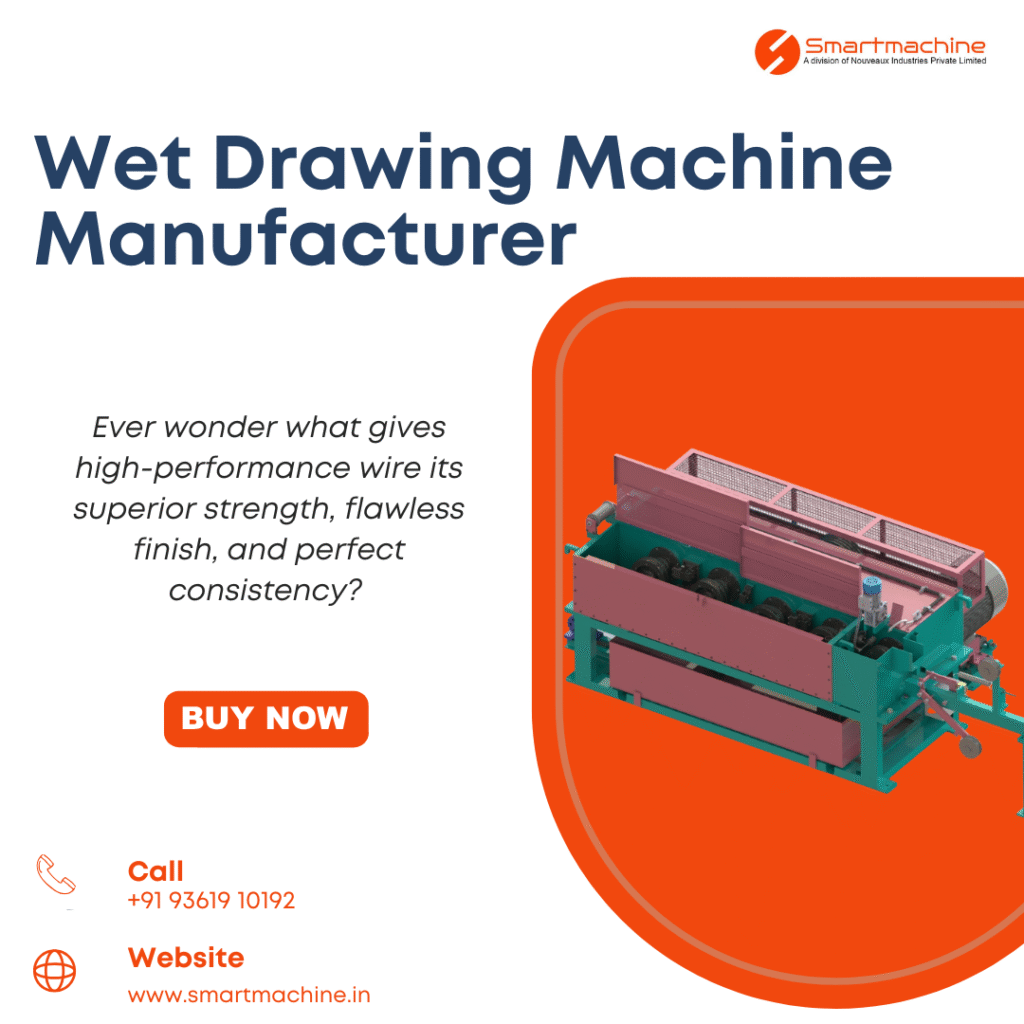Walk through any modern manufacturing facility, and you’ll see it everywhere: wire. From the sturdy strands in the cables powering our cities to the delicate filaments in medical devices, wire is a fundamental component of our world. But how does a thick, coarse metal rod transform into a strong, precise, and flawless wire? The answer lies in a process called wire drawing, and at the heart of this process is a true unsung hero: the wet drawing machine.
While the concept of drawing wire through a die to reduce its diameter is ancient, the wet drawing machine represents the pinnacle of this technology for fine and specialty wires. It’s not just a machine; it’s the key to achieving the high-quality, consistent wire that modern industries demand.

What is Wet Wire Drawing?
Let’s start with the basics. Wire drawing is a metalworking process where a wire rod is pulled through a series of progressively smaller conical dies to reduce its diameter and increase its length.
- Dry Drawing: Typically used for thicker wires, where the wire is coated with a lubricant before passing through the die.
- Wet Drawing: Used for producing fine and ultra-fine wires, where the entire drawing process is submerged in a lubricating and cooling fluid.
This “wet” environment is what makes all the difference for modern manufacturing standards.
The Core Functions: Why the “Wet” in Wet Drawing is a Game-Changer
The fluid bath in a wet drawing machine is not just simple lubrication; it’s a multi-functional solution critical for quality and efficiency.
1. Unmatched Lubrication & Reduced Friction
As the wire is forced through the tiny diamond or tungsten carbide dies, immense friction and heat are generated. The fluid creates a hydrodynamic film that:
- Minimizes Die Wear: This drastically extends the life of expensive dies, reducing downtime and operational costs.
- Lowers Drawing Force: Less energy is required to pull the wire, increasing machine efficiency.
- Prevents Galling and Scoring: Ensures a perfectly smooth surface finish on the final wire.
2. Superior Heat Dissipation
The plastic deformation during drawing generates significant heat, which can anneal (soften) the wire unevenly and degrade its mechanical properties. The surrounding fluid acts as a highly efficient heat sink, rapidly carrying away heat to maintain a consistent, low temperature. This is crucial for preserving the wire’s tensile strength and dimensional stability.
3. Continuous Cleaning and Surface Finish
The fluid continuously flushes away microscopic metal particles (debris) released during the drawing process. This prevents these particles from being embedded back into the wire’s surface, which is essential for achieving the mirror-like, defect-free finish required for applications like electronic bonding wire or fine medical sutures.
4. Precision and Consistency for Fine Wires
Wet drawing machines are exceptionally good at handling fine (down to 0.05 mm) and ultra-fine (down to 0.01 mm and smaller) wires. The stable, cooled, and lubricated environment allows for extreme dimensional accuracy and consistency over long production runs—a non-negotiable requirement in industries like aerospace and electronics.
The Impact on Final Wire Properties
The role of the wet drawing machine goes beyond just making wire thinner. It directly engineers the wire’s final characteristics:
- Enhanced Mechanical Properties: The controlled cold working in a cooled environment increases the wire’s tensile strength and hardness.
- Superior Surface Quality: It produces a bright, clean, and smooth surface that is resistant to corrosion and ideal for subsequent plating or coating.
- Exceptional Dimensional Tolerances: It allows for the production of wire with diameters held to incredibly tight tolerances.
Wet Drawing in Action: Where It’s Indispensable
You’ll find wet-drawn wire at the core of high-tech applications where failure is not an option:
- Automotive & Aerospace: In critical sensor and control system wiring.
- Electronics: For ultra-fine bonding wire that connects microchips to their packages.
- Medical Devices: In guidewires, stents, and surgical sutures where precision and reliability are paramount.
- Telecommunications: Within the tiny strands of fiber optic cables and delicate shielding.
- **Our Specialty: **The high-grade stainless steel wire used in our SS Wire Mesh Cable Trays benefits immensely from this process, ensuring each strand is strong, consistent, and flawlessly smooth for a superior, long-lasting product.
Conclusion: The Backbone of Precision Wire Manufacturing
The wet drawing machine is far from a simple piece of industrial equipment. It is a sophisticated system that enables the precision, quality, and efficiency required by today’s advanced manufacturing sectors. By providing optimal lubrication, cooling, and cleaning, it transforms raw metal into the high-performance wires that form the nervous system of our modern technological world.
In the quest for stronger, finer, and more reliable wire, the wet drawing machine remains an indispensable and revolutionary tool, quietly powering innovation one strand at a time.
